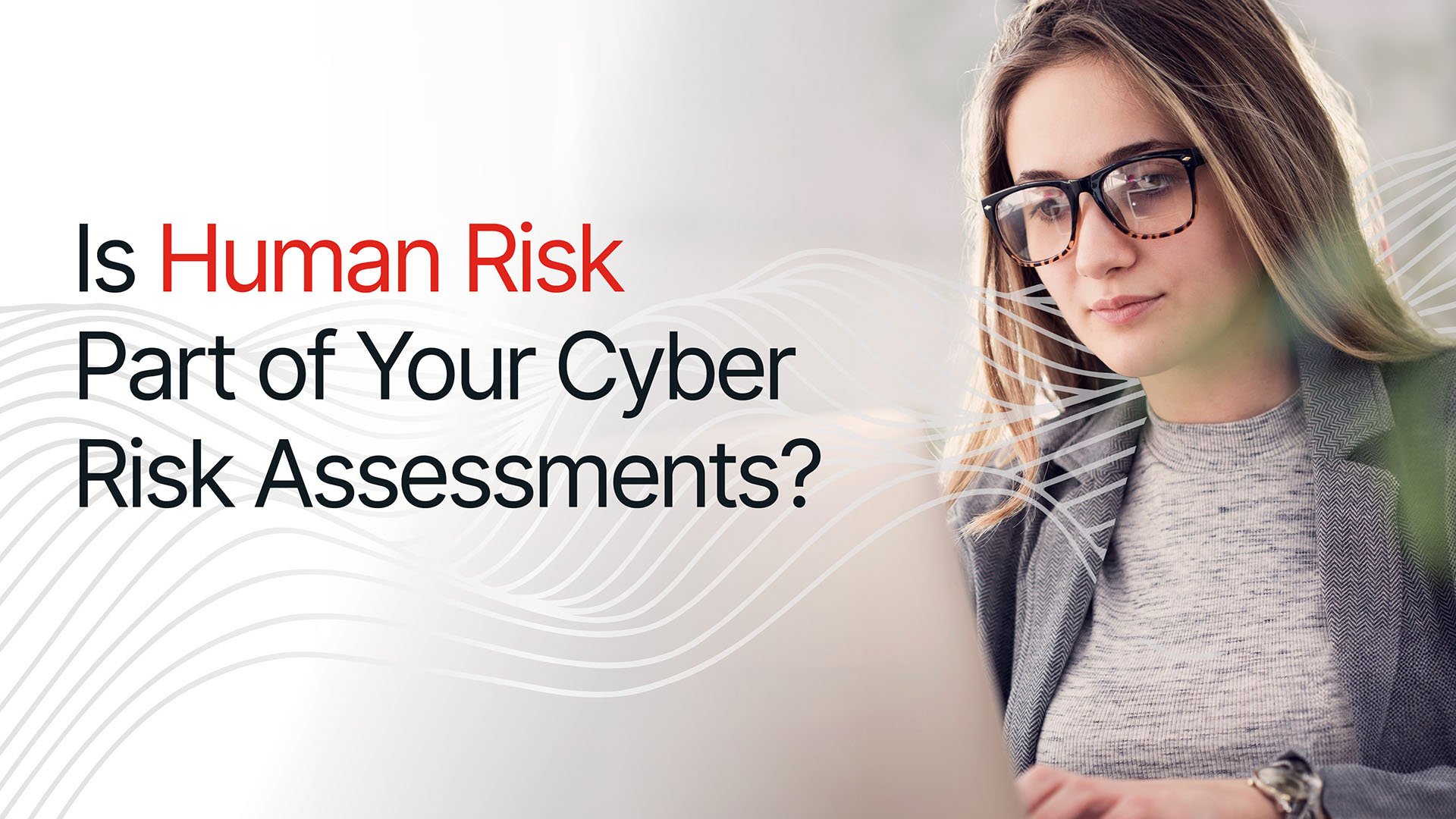

Blogs 
October 21, 2024
Maximizing Cyber Risk Assessment Tools to Gain Visibility into Human Risk

Leverage External Integrations for Comprehensive Threat Detection
In today's rapidly evolving digital landscape, cybersecurity threats have become more sophisticated, persistent, and damaging than ever before. As organizations increasingly rely on complex networks, cloud services, and interconnected systems, the attack surface for potential breaches continues to expand. Crucially, this expansion isn't limited to technological vulnerabilities alone; the human element has emerged as a critical factor in the cybersecurity equation.
Employees, contractors, and other insiders now represent one of the most significant risk vectors for organizations. Whether through inadvertent errors, social engineering susceptibility, or malicious intent, human actions can bypass even the most robust technical defenses. This human risk factor adds another layer of complexity to an already challenging security landscape.
The Challenge of Identifying Human Risk Events
Many organizations employ a variety of cyber risk assessment tools within their technology stack to monitor and track human-related risks. However, these tools often operate in isolation, creating data silos that limit their effectiveness. In the face of modern threats, this fragmented approach is no longer sufficient. Many companies rely on a diverse array of security tools, each generating its own set of alerts, logs, and analytics. While these tools may excel in their specific domains, they often operate in isolation, creating data silos that hinder a comprehensive understanding of the overall risk landscape.
This siloed approach leads to several critical limitations:
- Limited visibility into user behaviors and external threats: Without a unified view of user activities across different systems and networks, it becomes challenging to identify patterns that may indicate potential risks or insider threats.
- Incomplete context for risk events: When security incidents are analyzed in isolation, security teams may miss crucial connections between seemingly unrelated events.
- Delayed response times: The need to manually correlate data from multiple sources can significantly slow down incident response and risk mitigation efforts.
As highlighted in The Forrester Wave™: Human Risk Management Solutions, Q3 2024, organizations should look for an HRM solution that “identifies risky user behaviors and events via integrations with security technologies and responds to those behaviors and events with a broad set of targeted, real-time interventions based on a user’s human risk, such as training, nudging, updating technical policies, or sending alerts or workflows.”
Harnessing the Power of External Integrations

To gain a truly holistic view of your human-initiated risk landscape, cybersecurity professionals must leverage the power of external integrations. By connecting and consolidating data from multiple sources, organizations can break down these silos and achieve a comprehensive understanding of the human element in their overall security posture. This integrated approach enables more accurate assessment of human risk, improved threat detection, and more effective mitigation strategies for human-driven security challenges.
These integrations typically fall into several key categories:
- Endpoint Detection and Response (EDR) tools
- Security Information and Event Management (SIEM) systems
- Identity and Access Management (IAM) platforms
- User and Entity Behavior Analytics (UEBA) solutions
- Threat intelligence feeds
- Cloud security posture management tools
By consolidating data from these diverse sources, organizations can achieve several critical benefits:
- Enhanced visibility: A unified view of security data allows for more comprehensive threat detection and assessment of human risk.
- Improved context: Correlating events across multiple systems provides richer context for security analysts, enabling more accurate prioritization of human risk.
- Faster response times: Automated data aggregation and analysis can significantly reduce the time required to identify and respond to mitigate human risk.
Living Security's Integrated Approach to Cyber Risk Assessment Tools
One notable example of this integrated approach is Living Security's Unify platform, which provides out-of-the-box integrations for security and IT tools from vendors such as 1Password, Abnormal, Carbon Black, Cofense, Cornerstone, Crowdstrike, Fortra, Fusion, IdentityIQ, Knowbe4, LastPass, Material, Microsoft, Mimecast, Netskope, Okta, Proofpoint, Rapid7, SailPoint, Sophos, SpyCloud, Tenable, Workday, and Zscaler.
Additionally, Unify provides a simple push API that enables customers to integrate data from practically any data source, including custom or in-house data sources. These integrations surface events from these various tools to Unify to understand the behaviors of humans in the organization and the environmental threats that surround them to assess and quantify the risk of human users.
As Unify incorporates this broad data set, it builds out a data model consisting of a comprehensive graph of the organizational structure, including all of the human identities represented in the data. After applying a proprietary entity resolution algorithm to account for the discrepancies in the way the various source systems understand the identities, Unify can then attribute behaviors and events to the identities represented in the model. This model is used to generate a predictive and quantified assessment of risk for identities in the model – something we call the Human Risk Index (HRI).
Actionable Steps for Implementing Integrated Risk Assessment Tools
For organizations looking to enhance their cyber risk assessment capabilities through external integrations, consider the following steps:
- Audit your current security stack: Take inventory of all existing security tools and the types of data they generate.
- Identify integration opportunities: Look for areas where data from different tools could be combined to provide greater insights into human behaviors.
- Establish data sharing protocols: Ensure that proper governance and privacy measures are in place for sharing data between systems.
- Implement a centralized risk dashboard: Choose a platform that can aggregate and visualize data from multiple sources in a meaningful way.
Future Trends in Cyber Risk Assessment Tools
As the field of cybersecurity continues to evolve, several emerging trends are shaping the future of cyber risk assessment tools:
- AI and machine learning advancements: These technologies will play an increasingly important role in analyzing vast amounts of security data, identifying subtle patterns, and predicting potential threats.
- Predictive analytics for proactive human risk management: By leveraging historical data and advanced modeling techniques, organizations will be better equipped to anticipate and mitigate risks before they materialize.
- Continuous monitoring and real-time risk scoring: The shift towards continuous assessment and real-time risk scoring will enable organizations to maintain an up-to-date understanding of their security posture in an ever-changing threat landscape.
In an era of increasingly sophisticated cyber threats, the importance of comprehensive and integrated cyber risk assessment tools cannot be overstated. By breaking down data silos and leveraging external integrations, organizations can gain a holistic view of their security posture, enabling more effective threat detection and risk mitigation.
For cybersecurity leaders and professionals, now is the time to critically evaluate your current human risk assessment capabilities. Ask yourself: Are your existing tools providing a truly comprehensive view of your organization's human risk landscape? If not, consider exploring Living Security’s Unify platform which integrates with tools across your tech stack that gives you the visibility into where risk lies and where to prioritize your mitigation efforts.